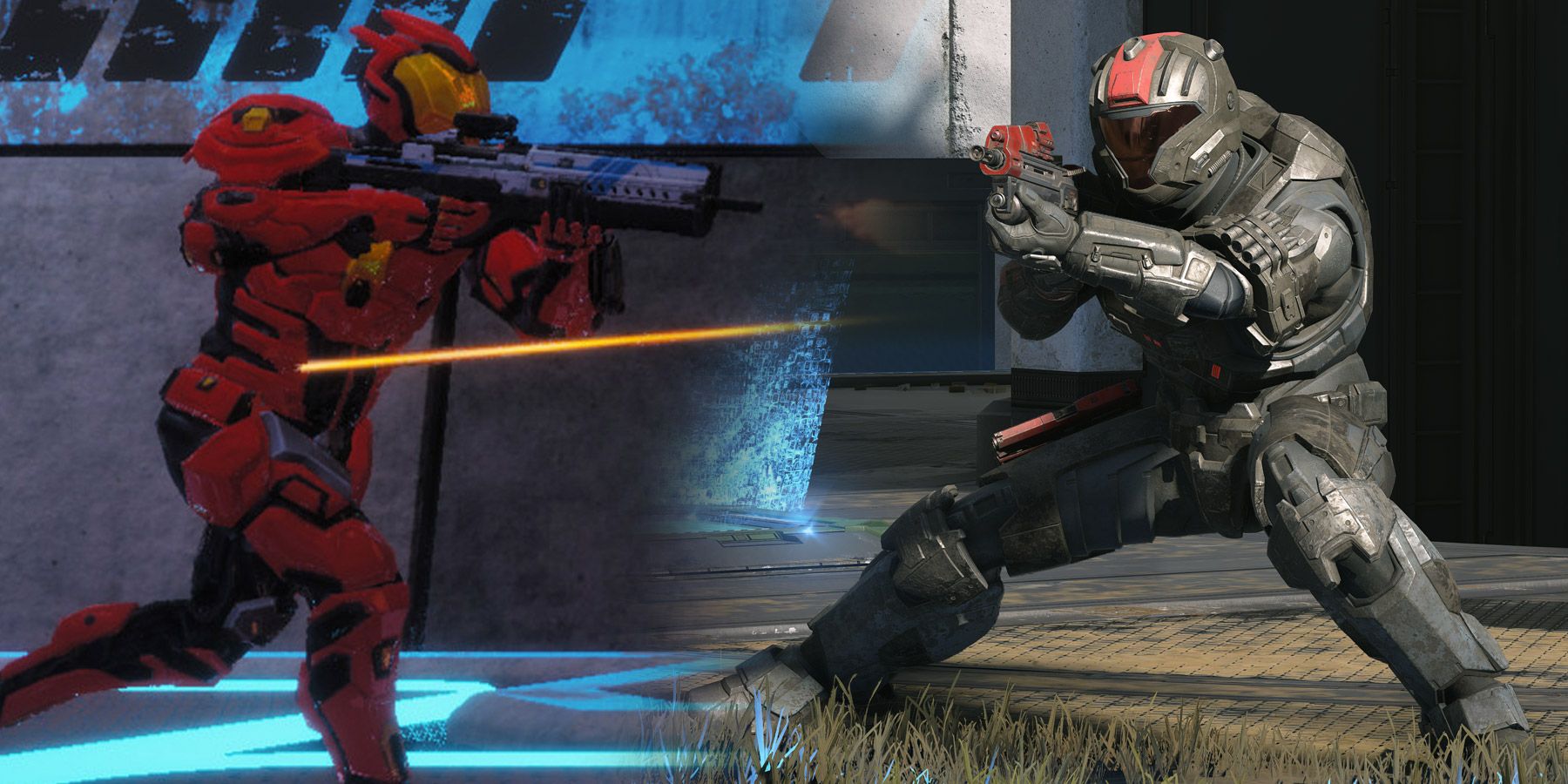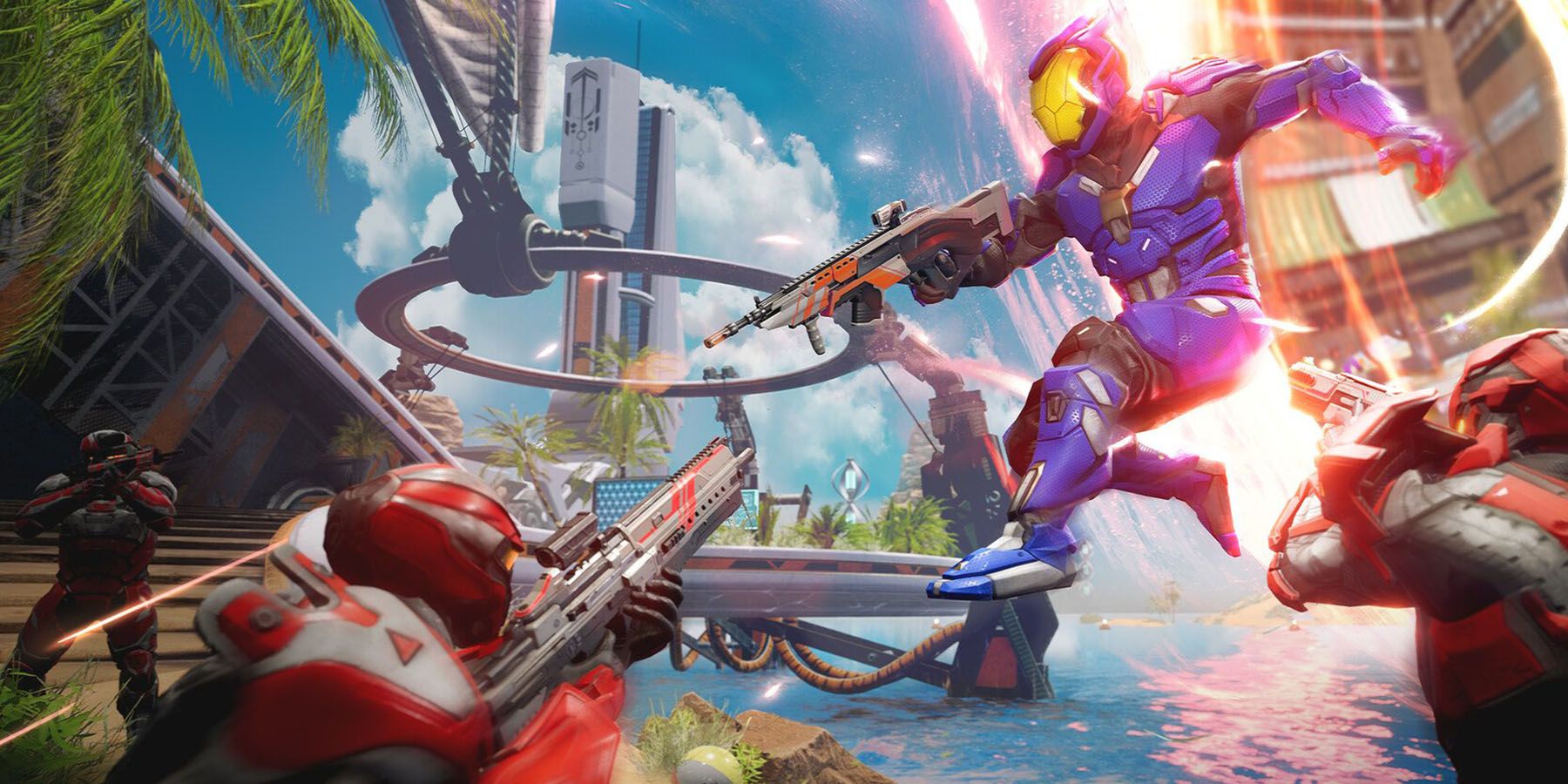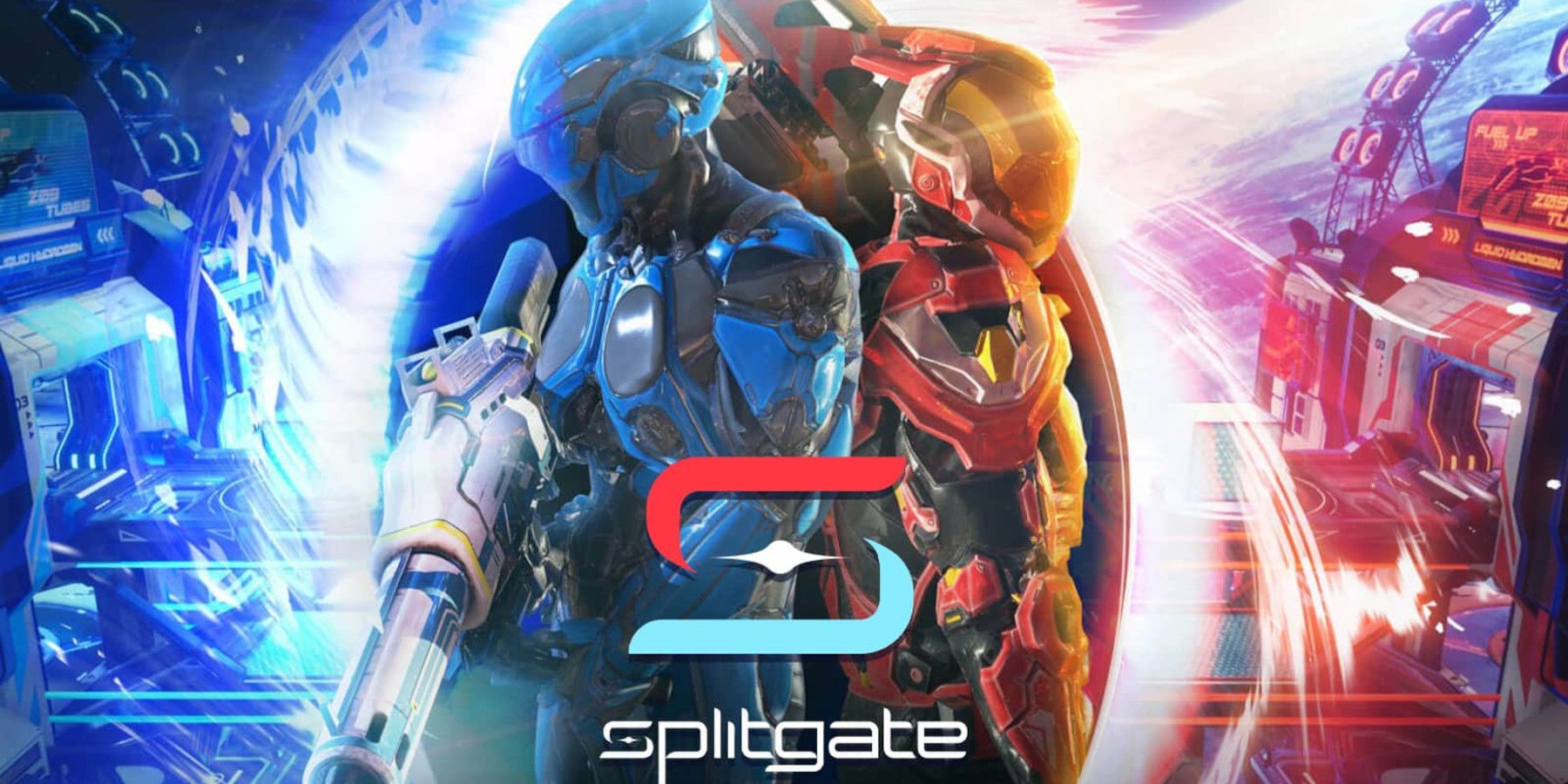Entering early access on Steam in 2019, Splitgate had only a few low rumbles of buzz surrounding it. Upon hitting consoles this year, Splitgate started to gain some real traction in the industry, with many players heralding it as the rebirth of the arena shooter genre, something that fans had been desperate for since the old days of Quake and Unreal Tournament.
Many players were also quick to point out Splitgate's striking similarities to a certain groundbreaking, super-soldier-led, sci-fi shooter: Halo. On its surface, Splitgate does seem to take an awful lot of inspiration from Halo; the weapon names are essentially the same, the weapon models look very similar, and the announcer is doing a pretty spot on impression of Halo's Jeffrey Steitzer. With Halo Infinite's multiplayer now out, players might be starting to ditch Splitgate if they only view it as an imitator - but there's one key thing that it has that Halo doesn't.
Thinking With Portals
Portals, as a concept, are pretty interesting, no matter what medium they're in. Valve's critical masterpiece Portal took this already-cool concept and dialled it all the way up, giving players the ability to harness the power of portals to solve environmental puzzles. The intuitive and simple controls of Portal led to it being one of the most well-received and accessible games of all time.
Splitgate takes this intuitive system and seamlessly transitions it into a first-person arena shooter. With just a single press of a shoulder/bumper button, players can launch a portal onto a designated surface. Once the portal's down, players can use it in a variety of ways. Players can travel through it, using it to traverse across the map in seconds. Players can launch it directly at an enemy's base, using it as a vantage spot to pick off spawning opponents. Splitgate players can even use it trick their enemies by sending them on a wild goose chase through a series of portals that ends in a fatal trap.
The sheer variety and player agency given in Splitgate is truly unique for an arena shooter. With the range of tactics and moves you can pull off with these portals, every match feels new and exciting. While veterans of the game may have their go-to methods of attack, the ability to switch up the gameplay experience and handle each match differently is always there, which makes Splitgate's lack of maps much less of an issue.
A Nostalgic Arena Shooter
Even if players take away Splitgate's main selling point, the game is still a remarkably impressive modern arena shooter. The gunplay feels tight and responsive, the addition of power weapons to Splitgate gives each match a tense atmosphere, and technical aspects like the visuals and audio design are pretty solid. While these individual elements may not win any awards or stand out too much from the crowd, they all come together to make Splitgate an objectively decent game, at its very least.
Another thing going for Splitgate is the nostalgia surrounding the arena shooter genre. Back in the PC gaming era of old, aforementioned titles like Quake and Unreal Tournament redefined the first-person-shooter following the groundwork set done by the likes of Wolfenstein 3D and Doom. Many fans of the genre will remember the distinct feel of the movement and the maps themselves, and Splitgate goes a decent way in recapturing that iconic feeling, providing some maps that harken back to classic arena layouts.
While it may be argued that Halo Infinite has tighter controls, better graphics, better sound design, and vehicle mechanics, players shouldn't be so quick to abandon Splitgate. After all, portals are pretty fun and nostalgia is a powerful thing.
Splitgate is available now on PC, PS4, PS5, Xbox One and Xbox Series X/S



